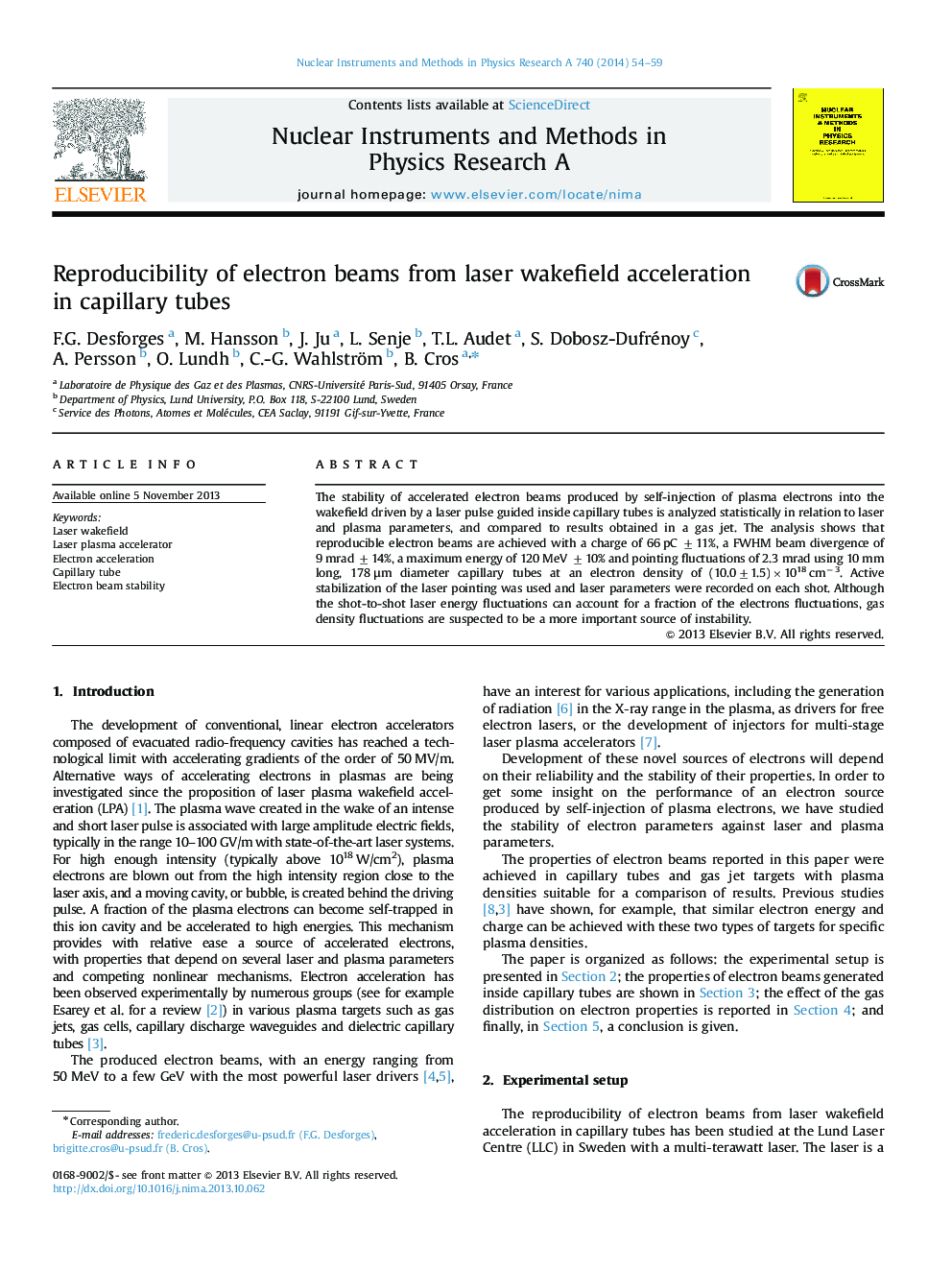| Article ID | Journal | Published Year | Pages | File Type |
|---|---|---|---|---|
| 8177262 | Nuclear Instruments and Methods in Physics Research Section A: Accelerators, Spectrometers, Detectors and Associated Equipment | 2014 | 6 Pages |
Abstract
The stability of accelerated electron beams produced by self-injection of plasma electrons into the wakefield driven by a laser pulse guided inside capillary tubes is analyzed statistically in relation to laser and plasma parameters, and compared to results obtained in a gas jet. The analysis shows that reproducible electron beams are achieved with a charge of 66 pC ±11%, a FWHM beam divergence of 9 mrad ±14%, a maximum energy of 120 MeV ±10% and pointing fluctuations of 2.3 mrad using 10 mm long, 178μm diameter capillary tubes at an electron density of (10.0±1.5)Ã1018 cmâ3. Active stabilization of the laser pointing was used and laser parameters were recorded on each shot. Although the shot-to-shot laser energy fluctuations can account for a fraction of the electrons fluctuations, gas density fluctuations are suspected to be a more important source of instability.
Related Topics
Physical Sciences and Engineering
Physics and Astronomy
Instrumentation
Authors
F.G. Desforges, M. Hansson, J. Ju, L. Senje, T.L. Audet, S. Dobosz-Dufrénoy, A. Persson, O. Lundh, C.-G. Wahlström, B. Cros,
